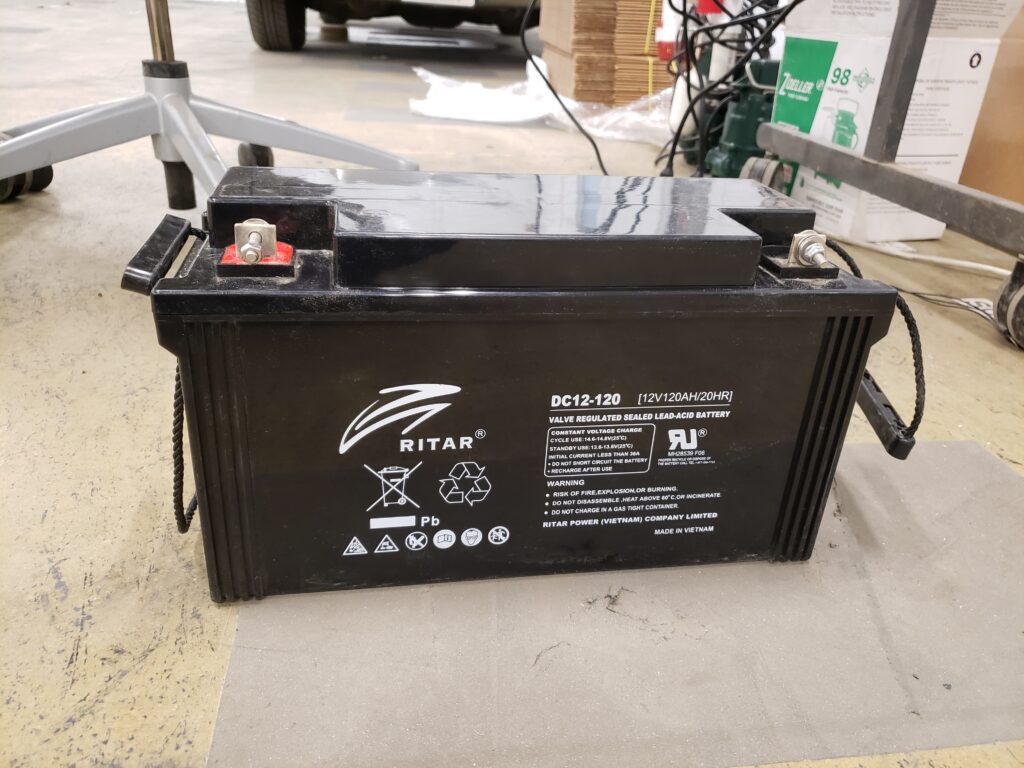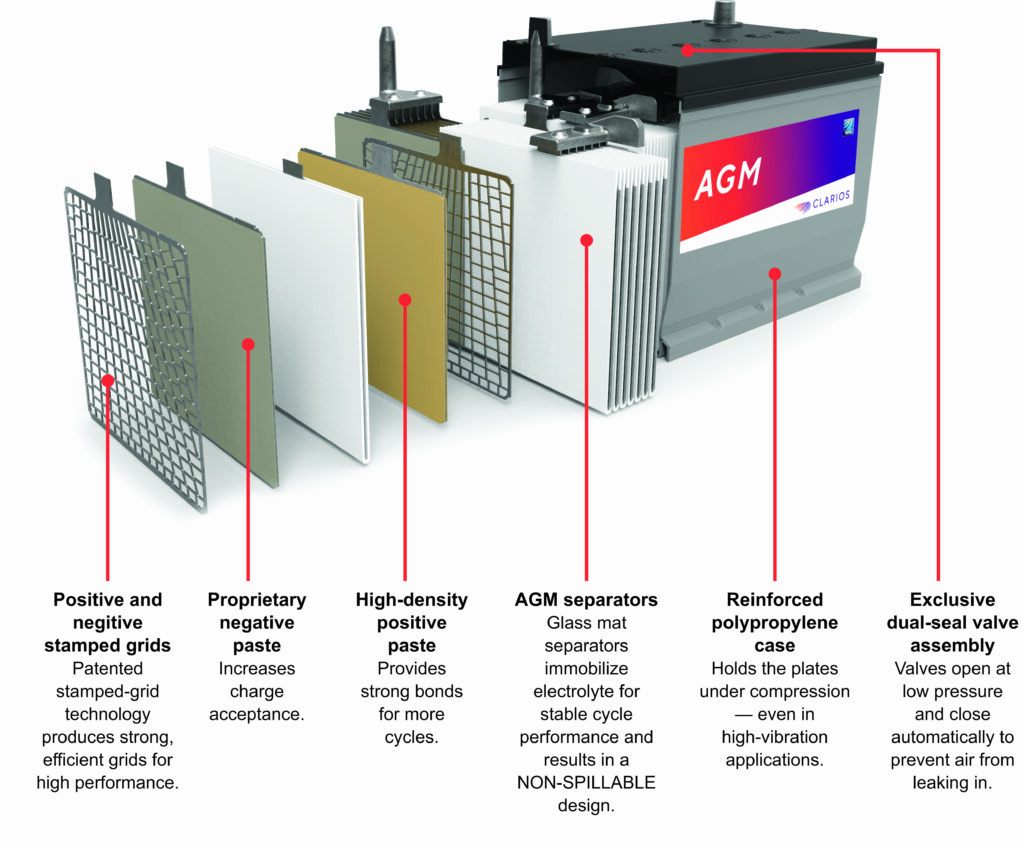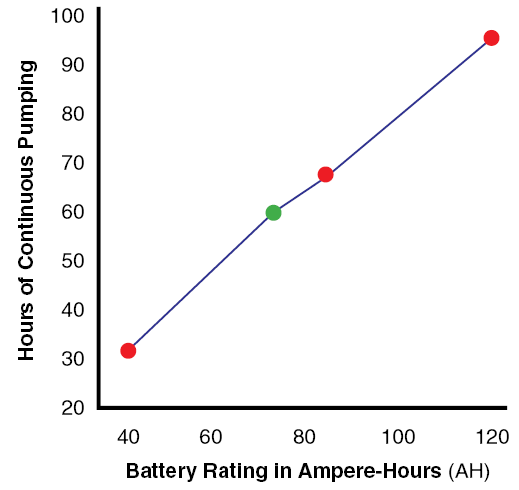https://www.ndsu.edu/agriculture/extension/publications/electric-backup-sump-pumps-houses
The typical backup pump system has a 12-volt direct current (DC) motor powered by a battery connected to a specially designed trickle charger. A regular battery charger will not work for this type of installation except in an emergency.

Two types of lead acid batteries are available. Most people are familiar with the standard lead-acid vehicle battery used in a car. These batteries are designed to provide a large amount of current for a short period of time.
The output and capacity of these batteries are rated in cold cranking amps (CCA). The number of CCAs often is printed on top of the battery case. This is not the type of battery to use with a backup sump pump, except in an emergency.
A deep-cycle lead-acid battery (sometimes called a marine battery or AGM) is recommended for backup sump pumps. This type of battery is rated in ampere-hours (AH). The standard AH rating indicates the number of amps provided in excess of 20 hours. For example, if a battery has a rating of 80 AH, it would provide 4 amps an hour (80/20) for 20 hours. The AH rating is usually printed on the top of the battery.

Combination 12-volt lead-acid batteries have a CCA and an AH rating. However, for backup sump pumps, this type is not as preferable as a deep-cycle battery. Some versions of the lead-acid battery that you may find in stores are the Wet Cell, Gel Cell and Absorbed Glass Mat (AGM).
The Gel Cell and AGM are preferred for backup sump pumps because the plates do not sulfate easily, the terminals don’t corrode, and the chance of a hydrogen gas explosion occurring is small. These are important considerations because the battery will be located in the basement, which often has higher humidity than outside air. However, they are specialty batteries and often cost much more than the Wet Cell; plus, they may require a special charger.
Backup sump pumps are often sold as complete units and contain most of the necessary parts, including a charger. The battery and some plumbing pieces are sold separately. When purchasing a battery, check the backup pump manual to find out if the manufacturer recommends a maximum AH battery rating for the pump.
The battery, being the power source for the backup pump, requires periodic maintenance checks to make sure it is fully charged and operational. The battery voltage should be checked every six months. To test the battery, a voltmeter or volt-ohm meter (VOM) will be required. They are inexpensive and can be purchased at home supply or hardware stores.


Roy is a respected authority in the waterproofing industry, with over 40 years of experience under his belt. His company, Perma-Seal, has earned a reputation as Chicagoland’s premier waterproofing contractor, thanks to Roy’s unwavering commitment to quality, integrity, and customer satisfaction.
His latest innovation, the Basement Defender, is a testament to his dedication to providing homeowners with the best possible protection against basement flooding, representing a major leap forward in the industry’s efforts to prevent water damage and save homeowners from costly repairs.